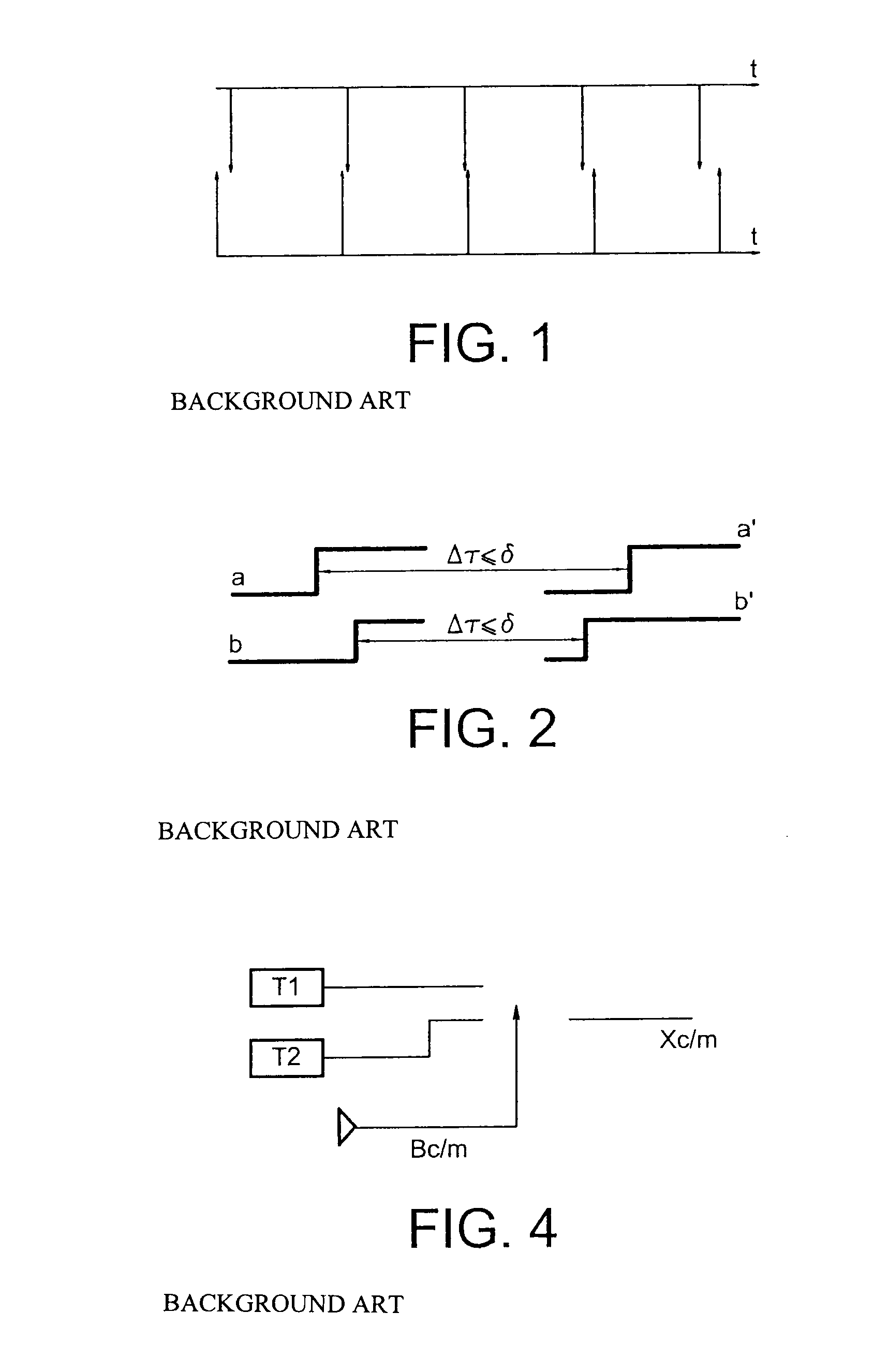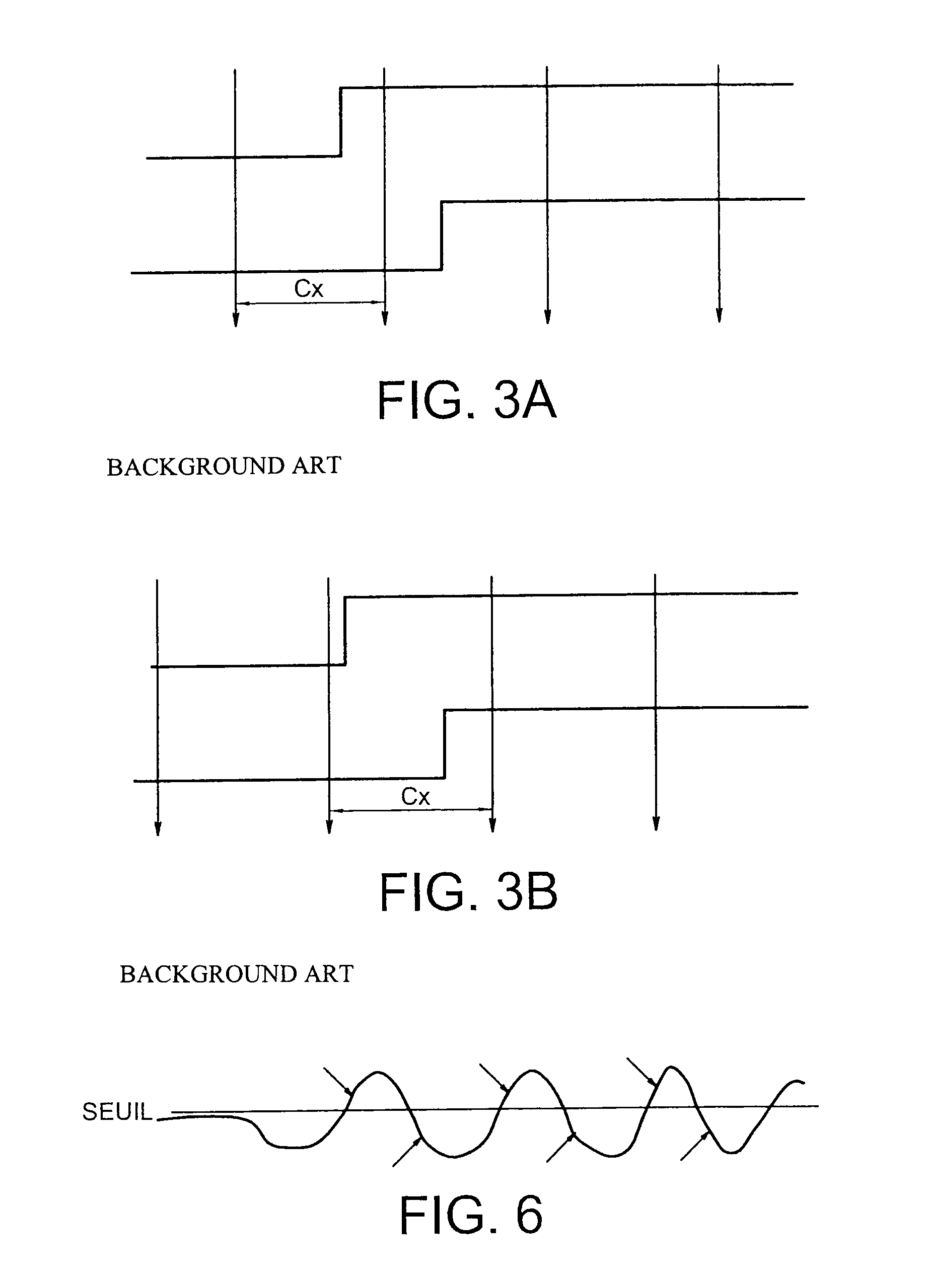Method and device for consolidation by software synchronisation in flight control computers
a software synchronisation and computer technology, applied in process and machine control, instruments, navigation instruments, etc., can solve problems such as transmission latencies, inaccurate clocks, and inability to achieve perfect accuracy
- Summary
- Abstract
- Description
- Claims
- Application Information
AI Technical Summary
Benefits of technology
Problems solved by technology
Method used
Image
Examples
Embodiment Construction
[0052]According to the invention, to equalise the sampled Boolean signals, two associated units in a computer of a computation system reach a consensus on a common value, based on the local value of each unit and the value received by the associated unit via the communication bus.
[0053]This common value is derived from a local synchronisation computation. At a given time, each unit has a pair of values:[0054]Bown, which is the local Boolean value;[0055]Bopp, which is the value received from the opposite (associated) unit, but which is not always the local Boolean of the other unit.
[0056]The consolidation computation is performed on this pair of Booleans and generates a Bcc Boolean value (for Boolean consolidated in COM) and a Bmc value (for Boolean consolidated in MON).
[0057]The two consolidated signals (Bcc and Bmc) are the closest possible.
[0058]The invention also relates to a method for synchronising two asynchronous units, for control and monitoring, respectively, of a computer ...
PUM
 Login to View More
Login to View More Abstract
Description
Claims
Application Information
 Login to View More
Login to View More - R&D
- Intellectual Property
- Life Sciences
- Materials
- Tech Scout
- Unparalleled Data Quality
- Higher Quality Content
- 60% Fewer Hallucinations
Browse by: Latest US Patents, China's latest patents, Technical Efficacy Thesaurus, Application Domain, Technology Topic, Popular Technical Reports.
© 2025 PatSnap. All rights reserved.Legal|Privacy policy|Modern Slavery Act Transparency Statement|Sitemap|About US| Contact US: help@patsnap.com



